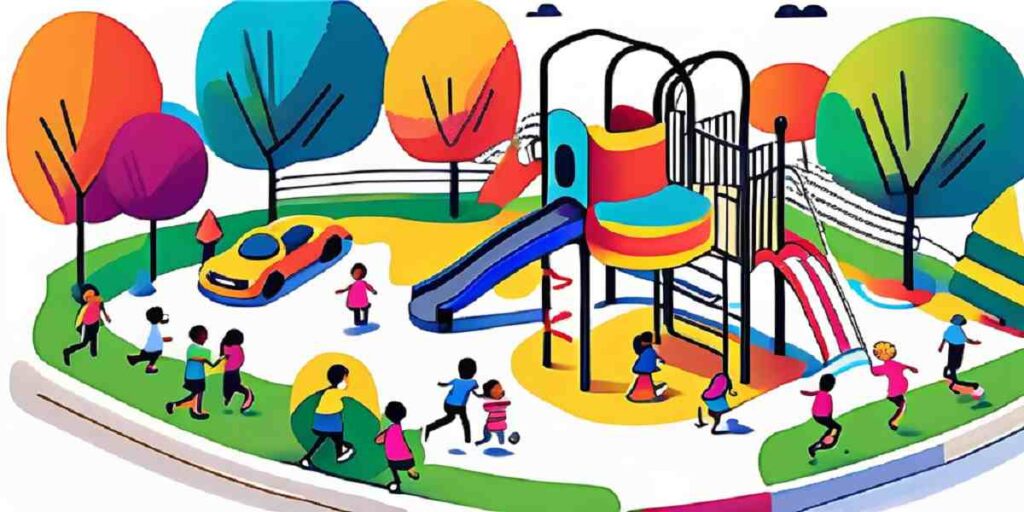In 2023, the UK government introduced new guidelines for safeguarding children in education. These guidelines, known as “Keeping Children Safe in Education 2023,” aim to provide a comprehensive framework for schools and educational institutions to ensure the safety and well-being of their students. Let’s explore some key aspects of these guidelines and learn how we can keep our children safe in an educational setting.
Table of contents
- Child Protection
- Keeping Children Safe in Education 2023 Changes
- How to Keep Your Child Safe in Education
- Child-Friendly School Policy
- Keeping Children Safe in Education: E-Safety
- Keeping Children Safe in Education: Forced Marriage
- Understanding the Different Types of Abuse
- Identifying the Common Categories of Abuse
- What Are the Changes in Keeping Children Safe in Education 2023?
- What Are the 5 Parts of Keeping Children Safe in Education?
- How Many Parts Are There in Keeping Children Safe in Education 2023?
- What Is the Most Current UK Guidance for Safeguarding Called?
- What Does TED Stand for in Safeguarding?
- Conclusion
Child Protection
Child protection is a fundamental aspect of keeping children safe in education. It involves implementing measures to prevent and respond to any form of abuse or harm that children may be exposed to. Abuse can take various forms, including physical, sexual, emotional, and neglect. However, the government has identified specific categories of abuse that help us better understand the different types of harm children may experience.
Creating a safe environment for children involves not only recognizing the signs of abuse but also understanding the impact it can have on a child’s physical and emotional well-being. Educators play a crucial role in safeguarding children and providing them with the support they need to thrive academically and socially.
How Many Categories of Abuse Are There?
There are five main categories of abuse: physical abuse, emotional abuse, sexual abuse, neglect, and child exploitation. Each category has its own characteristics and signs that educators and staff need to be aware of. By familiarizing ourselves with these categories, we can better protect our children and create a safe environment for them to thrive in.
Child exploitation, a form of abuse that is becoming increasingly prevalent in the digital age, involves the manipulation and coercion of children for various purposes, such as forced labor or sexual exploitation. It is essential for educators to stay informed about the risks children face online and to educate them about safe internet practices to prevent exploitation and abuse.
Keeping Children Safe in Education 2023 Changes
The 2023 edition of “Keeping Children Safe in Education” brings several changes to the previous guidelines. These changes include updates to the definition of terms, additional guidance on specific issues such as online safety and forced marriage, and a greater emphasis on the role of schools in preventing and tackling abuse. All educational professionals need to stay up to date with these changes and ensure that their safeguarding policies align with the new guidelines.

One significant update in the 2023 edition is the inclusion of a section on mental health and well-being. Recognizing the interconnected nature of safeguarding and mental health, the guidelines now provide detailed recommendations on how schools can support students who may be experiencing mental health challenges. This addition underscores the importance of a holistic approach to safeguarding that considers not just physical safety but also emotional well-being.
Furthermore, the revised guidelines introduce a new requirement for schools to conduct regular training sessions for staff on recognizing signs of abuse and responding effectively. By emphasizing the need for ongoing education and skill development in this area, the 2023 edition aims to empower school staff to create a safer environment for children. These training sessions are designed to enhance awareness, improve response times, and ultimately contribute to a more vigilant and proactive safeguarding culture within educational institutions.
How to Keep Your Child Safe in Education
As parents, there are several steps we can take to ensure our child’s safety while they are in an educational environment. Firstly, open communication with your child is key. Encourage them to talk about any concerns or experiences they may have encountered in school. Secondly, familiarize yourself with the school’s safeguarding policies and procedures. By understanding how the school addresses safeguarding, you can work collaboratively with the staff to promote your child’s safety. Additionally, teach your child about personal boundaries, consent, and online safety. Providing them with the necessary knowledge and skills empowers them to protect themselves.
Child-Friendly School Policy
A child-friendly school policy is an integral part of keeping children safe in education. It involves creating a positive, nurturing, and inclusive environment where children feel supported and respected. Such policies prioritize the well-being and safety of students while promoting their educational development. By implementing a child-friendly school policy, educational institutions can foster an atmosphere that encourages open communication and ensures the protection of every child’s rights.

Keeping Children Safe in Education: E-Safety
In the digital age, e-safety has become a significant concern when it comes to child protection. Educational institutions must address potential risks associated with internet usage, social media platforms, and online communication. The updated guidelines provide specific guidance on how to protect children in the online environment, including promoting safe internet use, educating students about online risks, and creating mechanisms for reporting any concerning online activities. E-safety measures are crucial components of safeguarding children in today’s technology-driven world.
Keeping Children Safe in Education: Forced Marriage
Forced marriage is a serious form of abuse that some children may be at risk of. The updated guidelines recognize the importance of addressing and preventing forced marriage in an educational setting. Schools have a responsibility to ensure that students are aware of their rights, provide them with information about forced marriage, and have clear procedures in place to support any student who may be at risk or affected by this issue. By incorporating forced marriage prevention into our safeguarding practices, we contribute to creating a safe space for all children.
Understanding the Different Types of Abuse
Having a comprehensive understanding of the different types of abuse is essential when it comes to safeguarding children in education. By recognizing the signs and characteristics of physical abuse, emotional abuse, sexual abuse, neglect, and child exploitation, educators can intervene promptly and provide the necessary support to children who may be experiencing harm. Proper training and ongoing professional development are crucial in ensuring that all educational professionals are equipped with the knowledge and skills to identify and respond to abuse effectively.

Identifying the Common Categories of Abuse
While there are specific categories of abuse, certain patterns and signs may indicate abuse across different categories. For instance, sudden and unexplained changes in a child’s behaviour, frequent absences from school, or physical injuries that cannot be reasonably explained may raise concerns about possible abuse. Teachers and staff need to be vigilant and report any suspicions or concerns following the school’s safeguarding procedures. Early intervention can make a significant difference in protecting a child from further harm.
What Are the Changes in Keeping Children Safe in Education 2023?
The 2023 edition of “Keeping Children Safe in Education” introduces several updates to the previous guidelines. These changes include clearer definitions of terms, improved guidance on issues such as online safety and mental health, and a stronger emphasis on the role of senior leaders in promoting safeguarding within educational institutions. The updated guidelines aim to enhance the effectiveness of safeguarding practices and ensure the safety and well-being of all children in education.
What Are the 5 Parts of Keeping Children Safe in Education?
- Safeguarding policies and procedures
- Staff training and awareness
- Safe recruitment practices
- Creating a child-friendly school environment
- Responding to concerns and disclosures
How Many Parts Are There in Keeping Children Safe in Education 2023?
The 2023 edition of “Keeping Children Safe in Education” is divided into three parts:
- Part 1: Safeguarding information for all school and college staff
- Part 2: The management of safeguarding
- Part 3: Safer Recruitment
What Is the Most Current UK Guidance for Safeguarding Called?
The most current UK guidance for safeguarding is titled “Keeping Children Safe in Education.” It offers extensive guidance and requirements for schools and educational institutions to ensure the safety and well-being of children under their care. It encompasses various aspects of safeguarding, including identifying signs of abuse, creating a safe learning environment, and responding to concerns and disclosures.
What Does TED Stand for in Safeguarding?
About safeguarding, TED stands for “Tell, Explain, Describe.” TED is an approach that encourages children to communicate any concerns or experiences they may have regarding their safety or well-being. By creating a safe and open space for children to share their thoughts and feelings, educational professionals can better respond to their needs and take appropriate action to protect them from harm.
Conclusion
The introduction of “Keeping Children Safe in Education 2023″ demonstrates the UK government’s commitment to prioritizing the safety and well-being of children in educational settings. By understanding the guidelines and implementing the recommended measures, we can collectively create a safe and supportive environment for our children to learn and flourish. Remember, safeguarding is a collective effort that involves parents, educators, and society as a whole working together to ensure the protection of our most vulnerable members.
